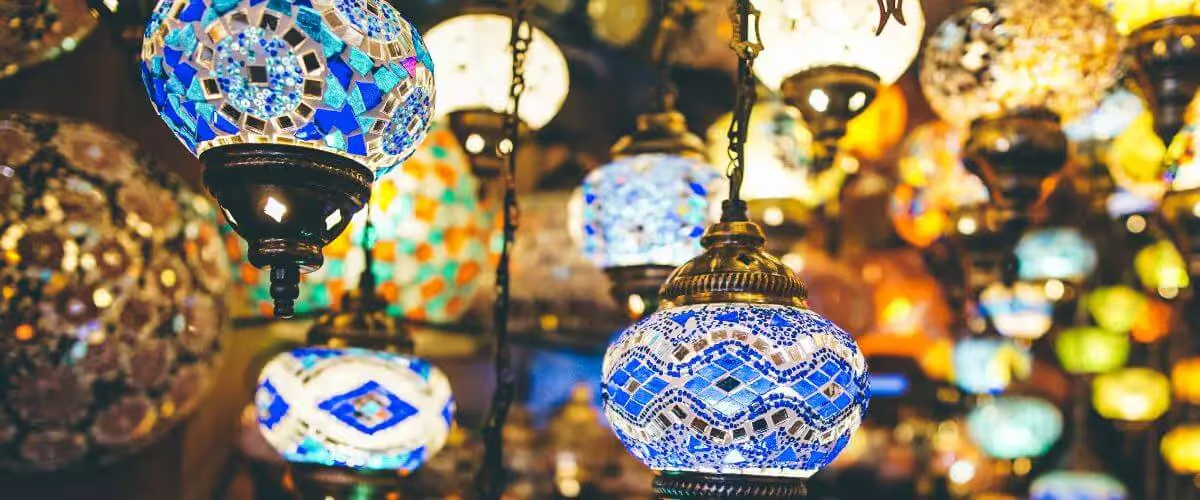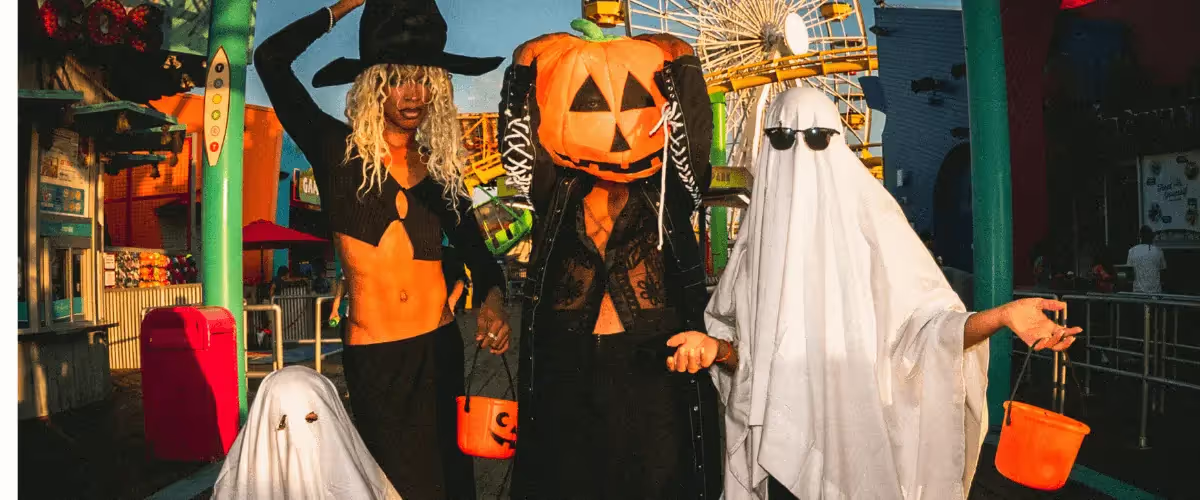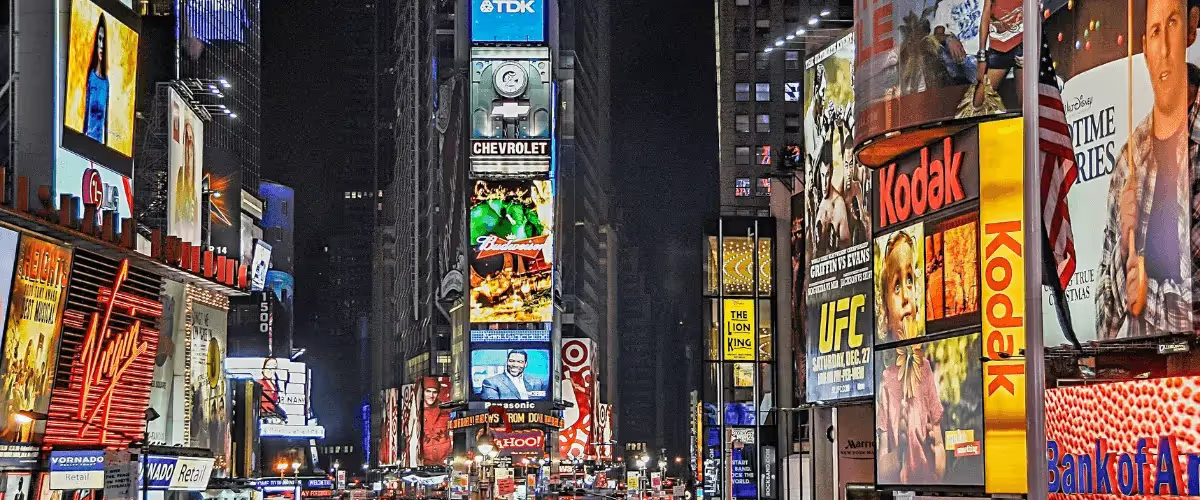5 Brands That Have Successfully Reinvented Themselves
Written by
Hannah
,
Copy Manager
May 15, 2023

Society is constantly changing, so when it comes to marketing, it’s important not to get left behind. Rebranding isn’t just a case of a new lick of paint and a logo refresh, sometimes, it can mean completely taking your brand back to square one.
Time and time again, we’ve seen brands having to completely reinvent themselves, from their aesthetic all the way down to their core values, because their consumers have simply outgrown them.
With some taking change completely in their stride and some falling short, we’ve decided to look at some of the success stories and the key takeaways behind their rebrands!
Abercrombie & Fitch
American clothing brand Abercrombie & Fitch dominated the fashion sphere with young generations and reached its cultural zenith throughout the late 90s and early noughties.
Under the reign of former CEO Mike Jeffries, and along with their preppy heritage aesthetic, they had tunnel visioned their branding and appealed primarily to the American ‘frat boy’ and size 0 women. If it wasn’t argyle, a v-neck pullover, a rugby shirt or a boat shoe *shudders*, they weren’t interested. With their rigid branding, it was only a matter of time before their exclusionary marketing received strong pushback. In a 2006 interview, Jeffries overtly said;
"In every school, there are the cool and popular kids, and then there are the not-so-cool kids. Candidly, we go after the cool kids. We go after the attractive all-American kid with a great attitude and a lot of friends. A lot of people don't belong, and they can't belong. Are we exclusionary? Absolutely.”
The recent Netflix documentary, ‘White Hot: The Rise & Fall of Abercrombie & Fitch’, focussed on the controversies the company faced, from politically incorrect slogans on their clothing to promoting unattainable beauty standards, and after the retirement of Jeffries, the company’s marketing underwent a complete restructure.
Since 2017, under CEO Fran Horowitz, everything from the extended clothing sizes to the branding and even retail staff has been focused on inclusion and diversity, their new branding is reflective of Gen Z culture and the resurgence of 00s fashion, and they’re consistently pushing the narrative that everyone is a ‘cool kid’. And it shows. Within one year alone, Abercrombie's stock soared to over 271% and has contributed $263 million in revenue to the Hollister group, growing at an annual rate of 3.9%!
Crocs
If you had told us 10 years ago that Crocs would become a fashion success story, we wouldn’t have believed you, it’s very much the pineapple on pizza of the shoe world. But, in unlikely events, Crocs has managed to reinvent itself as the ‘IT shoe’ of celebrities and influencers alike.
Whether you love ‘em or hate ‘em, Crocs have gone from being the orthopaedic shoe of choice for nurses to the muse of some major fashion houses. With the silhouette of a Croc being somewhat of a blank canvas, brands such as Balenciaga, Palace, Christopher Kane and even KFC have collaborated with the shoe brand to produce unique designs that fit in with the streetwear aesthetic that is based around comfort and ease of wear.
Whilst the brand has been around since 2002, it’s evident that its new and improved marketing strategy has recently cemented itself in the fashion industry. In 2022, Crocs reached a record-breaking high of 3.6 billion dollars in revenue, which was a 54% increase from the previous year!
Victoria’s Secret
Since 1982, the well-known lingerie brand Victoria's Secret has built an empire based on ‘fantasy’. Under the reign of Leslie H. Wexner, Victoria’s Secret became synonymous with exclusion, carefully masked within the haze of ‘angels’ and the fluttery confections of rhinestones and feathers.
Their branding has always been about curating a perfect image. From the supermodels chosen to walk in their infamous runway shows to the people who work in their stores. Gradually, the image of the brand was met with raised eyebrows, and cultural credibility was brought into question. Having a brand cater exclusively to one body type definitely isn’t sustainable in the long run. In 2018, the VS brand came under controversy when their former marketing chief announced they wouldn’t cast plus-sized or transgender models as they don’t “market themselves to the whole world”.
After years of a slow decline in revenue, Victoria’s Secret took the plunge and announced in 2021 that it would rebrand itself. With a new direction, they’ve aimed to become a more inclusive brand. A clear effort in this is the creation of the ‘VS Collective’, a group of celebrities working to endorse them.
The ‘Collective’ is made up of women from different occupations and backgrounds, such as; Megan Rapinoe, Paloma Elsesser and Priyanka Chopra Jonas, to name a few. And they’re responsible for promoting the brand, appearing in advertisements and advising on the direction of the marketing. Since the VS collective launched, there’s been a visible difference in the branding of Victoria’s Secret. They’re consistently working to be more inclusive and diverse in all of their campaigns going forward.
H&M
Swedish fast-fashion giant H&M has worked to reinvent itself over the past few years. With an emphasis on sustainability, the H&M group released their sustainability report in 2018, which claimed that by 2030 they only want to use recycled and sustainably-sourced materials to make their products, and by 2040 want to be 100% climate positive.
A far cry from its fast-fashion roots, H&M is also actively working on appealing to a variety of demographics. Collaborating with high-fashion brands, from Versace to Balmain and Stella McCartney and more recently, Mugler (to name a few), has allowed consumers to shop designer collaborations at an affordable price point and has seemingly been a huge success.
Barbie
With the upcoming anticipated release of the Barbie Movie, Barbiecore is truly having its moment. However, since the famous toy company launched in 1959, Barbie has massively reinvented its public image. Manufactured by Mattel, Barbie has previously been under fire for adhering to gender stereotypes and also promoting unattainable body types.
After receiving backlash, Mattel took Barbie back to the drawing board and re-assed how Barbie’s image is perceived. Since 2015, the company has consistently reacted to social and political changes. For example, their campaign ‘Close the Dream Gap’ grants charities working with young girls $250,000 every year and has invested in research programmes all over the world, and they’re also focussed on sustainability efforts!
Key Takeaways
Embrace Diversity
A key takeaway from brands reinventing themselves is to always prioritise embracing diversity. It’s estimated that 57% of consumers are loyal to brands that address social issues such as inequality. Additionally, 18-25-year-olds took greater notice of inclusive advertising before purchasing from certain brands.
Be Willing To Change
Changing with the times is essential for every brand. Consumer needs, demands and interests are consistently evolving, so it’s important not to get left behind.
Promote Honesty
A common mistake that many brands often make is not taking accountability for their mistakes. Promoting honesty within your marketing strategy is a major draw for consumers. On average, 94% of customers are likely to be loyal to brands that are completely transparent. For example, the rebrand of Abercrombie could be seen as a direct result of it acknowledging its past mistakes as a company.
Think we’ve missed one? Slide into our DMs and let us know! Or, if you’d like some top-tier marketing advice, get in touch with us today!
Get In Touch
Swipe to Read
.avif)


.avif)
.avif)
.png)
.png)
















.svg)